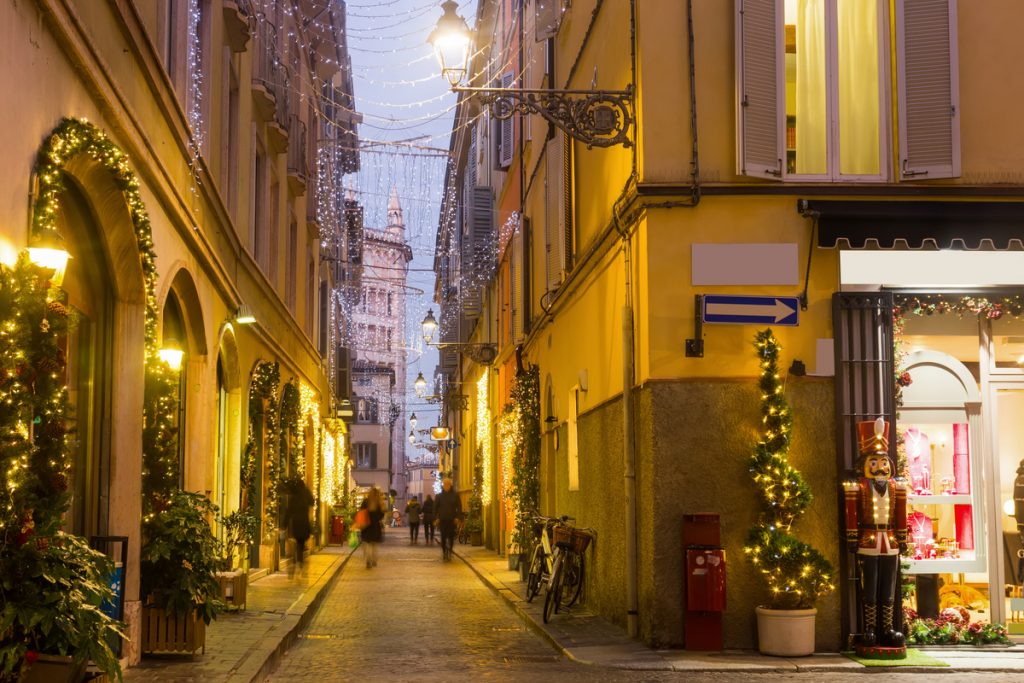Christmas in Parma

Observing how Italians cook for the holidays, I am tempted to clone a new definition that I would call, “The Language of Food”.
If I were Santa Claus, on the night of December 24th, while traveling to drop gifts to all the Italian children, I would spend plenty of time looking at the tables of all their families — certainly smiling and perhaps with a bit of envy, because for everyone it’s a feast.
First off, we should observe that agriculture in Italy began 8,000 years ago and that created a kaleidoscopic food biodiversity. Food and wine are the ambassadors from those 8,000 years of history and each town carries a colorful and unique speck of this kaleidoscope.
And you may fairly say that food and wine is important in Italy, but that gets blown out of proportion during the holidays.
An Expression of Love
So, The Language of Food, if you can call it in this way, is an expression of love and attention gifted to other members of the family. Language because it’s something very complex that stems from the local traditions of each single town, therefore embracing history.
The entire nation practically shuts down for two weeks from right before Christmas to January 6th, so food and wine for the holidays become a special treat — better than the rest of the year. The country floats on orgasmic dishes for two weeks.
Then, there is the December 24th dinner, the special within the special, a long and beautiful process, a concoction of artistry and time. It is always a “very long process.”
If you were to ask me “why does it take so long to prepare a dinner?” Well, a dinner like this can’t last less than four hours. Of course!
Going back on my memory bank, I distinctly remember my parents reserving the best produce from the local farmers a week ahead of time. “We’ve gotten the same produce from the same farmers for the last twenty years. Do you still have to call them ahead of time Dad?” — and easily a couple of days of food prepping ahead of dinner time.
Pisarelli e fagioli
In my home, we used to make “pisarelli e fagioli” a dry, homemade pasta, rolled into one’s fingers; a time consuming, Zen-like sacrifice to make, then cooked in a beans and tomato sauce with enough calories to thaw the harshest winter. That was the “must have” based on our family tradition.
Before that, there was always a long stream of appetizers. Italy is very traditional and I remember I was in awe when I got to know smoked salmon one Christmas Eve dinner. Salame, prosciutto, cheeses, anchovies, well, at least ten appetizers before the “pisarelli.” There was a roast and then, of course, the cake. Yes, we were four people, two children and two adults. Dressed up, if you are still wondering.
At the end, I don’t think it was a bunch of nonsense. It was and it still is, a way for all families to express love, attention, and a way to solidify the cradle that’s the family. I call it “The Language of Food.”


